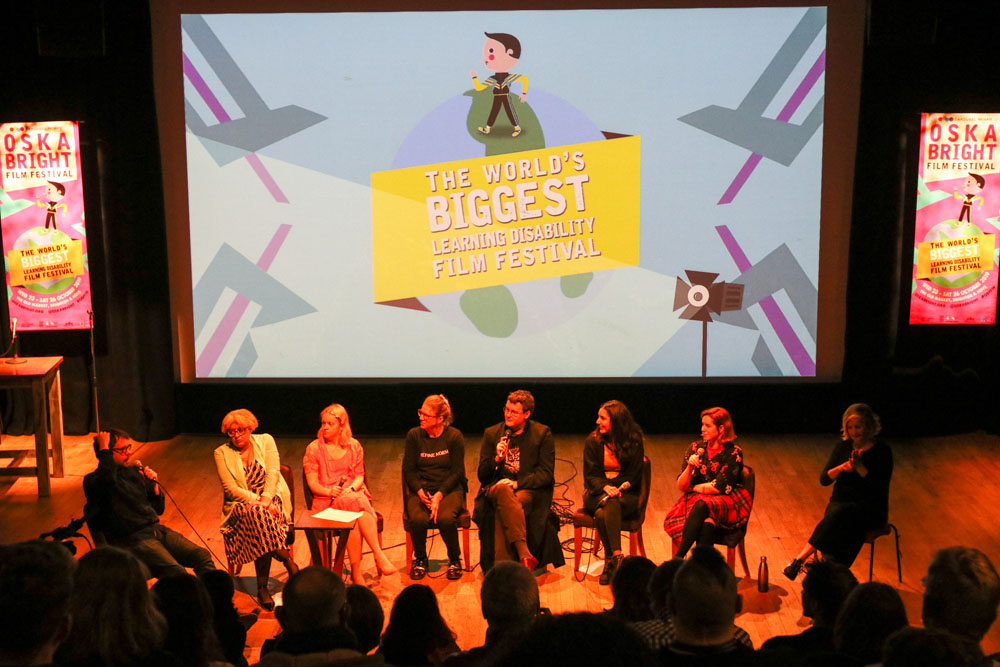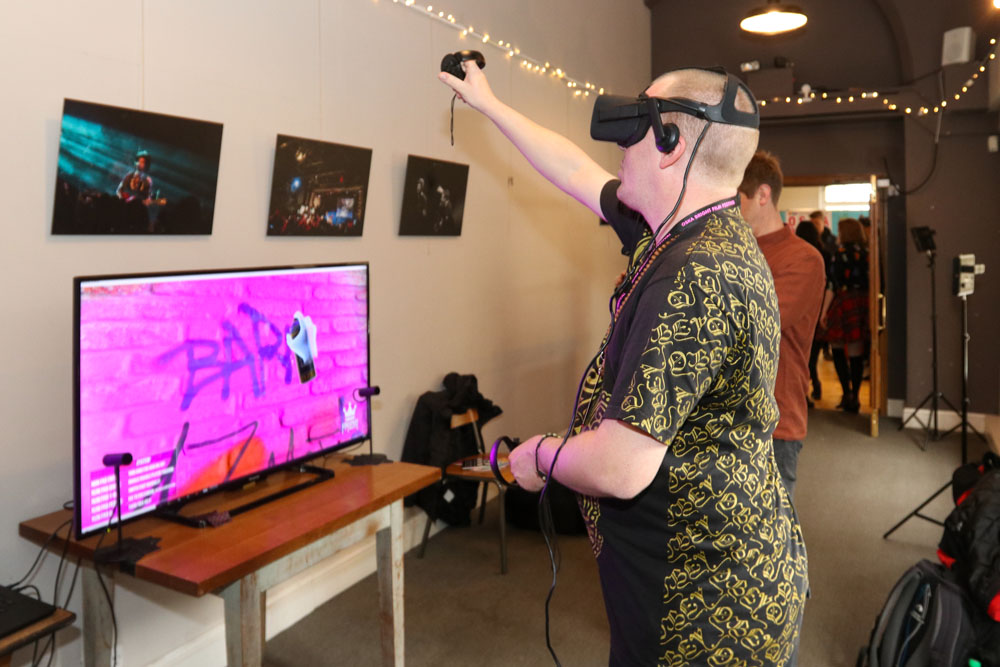Celebrating learning differences at Oska Bright Film Festival 2019
Annie Mannion | 01 Nov 2019 This time last week I was watching a set of short films made by learning disabled people at the ninth Oska Bright Film Festival, an inclusive four-day event held every two years at The Old Market venue in Brighton. All films screened at the festival are BSL interpreted, audio described and subtitled, and audiences can come and go as they please.
This time last week I was watching a set of short films made by learning disabled people at the ninth Oska Bright Film Festival, an inclusive four-day event held every two years at The Old Market venue in Brighton. All films screened at the festival are BSL interpreted, audio described and subtitled, and audiences can come and go as they please.
The festival is also programmed, managed and presented by learning disabled people, and the films it shows highlight the talent and creativity of those with learning disabilities, autism or Asperger’s.
With just 0.3 per cent of the total workforce in the film industry living with a disability – compared with 19 per cent of working age adults nationally – a goal of the Oska Bright Film Festival is to encourage the film industry to diversify its talent pool as well as provide fairer representation in film for disabled people.
One way they've been doing that is to work in partnership with film and media organisations to make short films together.
Learning disabled filmmakers co-create with university film students
Introducing the filmmaking focus day Vanessa Marr, Senior Lecturer for BA Design for Digital Media, at Brighton University, said "I prefer to say learning ability rather than disability. We can all learn something from those who witness the world differently."
Marr's been working with Oska Bright producers Carousel, a Brighton-based learning disabled led arts charity working in film, music, digital and broadcasting arts, to bring together learning disabled filmmakers with students on the Brighton University Digital Media course. The project has been running since 2016, and together the teams co-created some of the films screened at the session. Tom Wightman of the BFI Network's Film Hub South East has also more recently joined the partnership in a proactive effort from the British Film Institution to help nurture local filmmaking talent across different regions in the UK.
Lead programmer for Oska Bright, Matthew Hellett, said: “Learning-disabled artists and creatives from across the world are consistently underrepresented in the film and TV industries – both in front of and behind the camera. We’re really excited to give a voice to a community that is not seen and heard enough.”
Boosting disability representation in film and TV
Matthew continues: “There are 1.4 million people with a learning disability in the UK and we see a variety of people every day in the real world, so it’s time that was reflected on screen. There’s room for change and we want to be at the forefront of this change.”
The Audition, a film by Beth Richards, screened at the festival's filmmaking day this year. It features knitted figurines in a TV/film audition setting, with its content is based on academic research from the University of Bristol into the experiences of learning disabled and disabled people in the TV and film industries. As the audition experiences of the disabled people depicted become more and more difficult due to the lack of understanding of their needs by the industry executives they encounter, the knitted characters literally start to unravel.
Some of the points raised in the seven-minute film highlight the simple changes that the TV and film industries can make to improve the system for disabled people:
- Avoid jargon
- Ensure scripts are provided in Easy Read, in advance
- Offer help navigating the new physical environment
- Listen carefully to the needs of the learning disabled person.
A key message of the film is that all these considerations help the person to feel more comfortable in their task, to enable them to perform better.
Panellists in the post-screening discussion of the selection of short films included students from Marr's University of Brighton course, who explained that technology played a key part in ensuring open and regular communication channels between the students and the learning disabled filmmakers. Student filmmaker Lizzy explained that Skype and Facetime were vital for keeping up momentum within the relatively tight timeframe for the filming project. The limited availability and varied schedules of each of the filmmaking team meant that using tech was ideal to connect the team each working remotely.
Richards also described her slightly different approach to storyboarding her film structure for The Audition. Instead of using text-heavy descriptions or traditional storyboarding illustration techniques, she found it preferable to storyboard using plasticine to outline the scene development. These plasticine scenes would then be individually photographed to form the full storyboard.
Virtual reality and interactivity
 This year the festival also included a virtual reality (VR) experience, co-run with a learning disabled artist.
This year the festival also included a virtual reality (VR) experience, co-run with a learning disabled artist.
The VR interactive graffiti wall enabled visitors to create and save their very own virtual street art within the tool's urban street location. Artworks designed by attendees during the festival were then added to a virtual 'gallery' for visitors to browse via the system set up at the adjacent screen.



